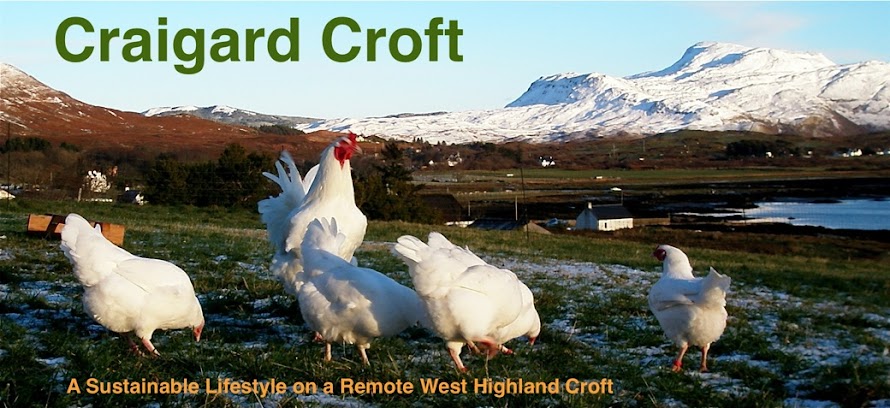One of the best light meals in France is green salad with "chevre chaud". The chevre is a small round soft cheese with a grey wrinkled rind a bit like a brain. As its my favourite cheese I made some today.
 |
| Cheese draining in crottin moulds |
Sanitise all of the tools and pieces of kit in a chlorine bath, I use Milton tablets one to five litres of water. Put the utensils back in the bath after use.
Take ten litres ( two gallons) of goat's milk and pasteurise it. Soft cheese is a great medium for mould and bacterial growth! Heat it slowly to 72C in a double boiler, the cheese bucket inside the jam pan. Once it gets to 72 hold that temperature for 15 seconds then plunge the bucket into a sink with cold running water to get the temperature down to 32C (inoculation temperature) as fast as possible.
 |
| Air drying aftyer brining |
This is artisan cheese making in the kitchen so the measurements have to fit the kit available. Add an eighth of a teaspoon of mesophilic culture then the same amount of
Geotrichum candidum, stir then leave to ripen for an hour.
Dilute your rennet (instructions on the label) and dilute in a quarter cup of water add to the milk and stir for a minute.Allow to coagulate for an hour. Its ready when your finger moved up through the surface leaves a clean break in the curd. Cut the curd with a sterilised bread knife with passes half an inch apart and full depth of the curd. If you don't have a curd knife to cut horizontally cut at an angle with the bread knife.
With clean hands stir gently three times over ten minutes then allow the curds to rest for ten minutes.
 |
| Home made "cave"for affinage |
Ladle the whey off the top into the crottin moulds. You can make these from yoghurt pots punctures with a hot wire or needle. Fill the moulds to the top because it shrinks dramatically. Stand the moulds over a roasting tin on a wire cooling tray. After half an hour turn the moulds over, slide the contents out on to a plate or saucer then pop the cheese back in upside down. Do this two three time more before leaving to drain until tomorrow morning.
Next morning the cheeses should have shrunk to a third of their original volume. Slide the cheeses out of their moulds and put them in a pan of saturated brine for 20 mins. After brining put the cheeses back on the wire tray to dry for two hours.
The cheeses need to be stored as closely as possible to 13C with the humidity at 80%. Turn them over every three days, they should be edible after 4 to 6 weeks. Wrap them in cheese paper and sore in the fridge. Simples.......


